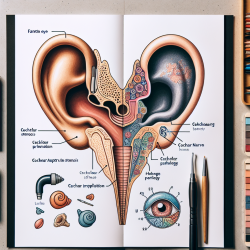As a practitioner dedicated to improving outcomes for children with autism, it's crucial to stay informed about the latest research. One recent study that offers valuable insights is "Cognitive flexibility in autism: Evidence from young autistic children" by Andreou et al. (2022). This study examines the cognitive flexibility of young autistic children using the Children's Color Trails Test (CCTT) and verbal fluency tasks. Here, we’ll explore the key findings and discuss how you can apply these insights in your practice to support cognitive development in children with autism.
Understanding Cognitive Flexibility
Cognitive flexibility refers to the ability to switch between thinking about different concepts and to think about multiple concepts simultaneously. It's a crucial component of executive function, which enables individuals to adapt their behaviors in response to changing environments and demands.
Key Findings from the Study
The study assessed 36 autistic children (aged 72–83 months) and 200 age-matched typically developing children using the CCTT and verbal fluency tasks. The findings revealed:
- Autistic children performed worse than their neurotypical peers in the switching component of the CCTT.
- In verbal fluency tasks, autistic children generated fewer word items than their neurotypical peers.
- The poorer performance in verbal fluency was driven by specific linguistic stimuli rather than difficulties in cognitive flexibility.
Implications for Practitioners
These findings suggest that while autistic children may struggle with nonverbal cognitive flexibility tasks, their performance in verbal fluency tasks is more influenced by the linguistic properties of the tasks. Here are some strategies you can implement based on these insights:
1. Tailor Assessments and Interventions
Given the study's findings, it's essential to tailor your assessments and interventions to address both cognitive flexibility and linguistic challenges. Use a combination of nonverbal and verbal tasks to get a comprehensive understanding of a child's cognitive abilities.
2. Use Visual Supports
Incorporate visual supports in your interventions to aid cognitive flexibility. Visual schedules, graphic organizers, and visual cues can help children understand and navigate transitions between tasks or activities.
3. Encourage Play-Based Learning
Engage children in play-based activities that require flexible thinking. Games that involve role-playing, problem-solving, and creative thinking can help improve cognitive flexibility in a fun and engaging way.
4. Provide Linguistic Scaffolding
Support verbal fluency by providing linguistic scaffolding. Use prompts, cues, and structured language activities to help children generate and organize their thoughts more effectively.
5. Foster a Growth Mindset
Encourage a growth mindset by praising effort and persistence rather than just outcomes. Help children understand that cognitive flexibility can be developed through practice and perseverance.
Encouraging Further Research
While this study provides valuable insights, it's just one piece of the puzzle. Encouraging further research in this area can help us better understand the complexities of cognitive flexibility in autistic children and develop more effective interventions. As practitioners, staying informed about ongoing research and contributing to the body of knowledge through observations and data collection can make a significant impact.
To read the original research paper, please follow this link: Cognitive flexibility in autism: Evidence from young autistic children.










